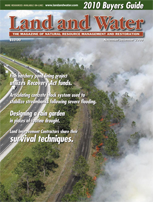School of Hard Knocks (SHK)
Where industry professionals share stories and situations that led them to a Hard Knock lesson
Do you have a Hard Knocks experience that you would like to share with our readers for Land & Water's eNewsletter "Hold Your Ground"? Over the years, we've had numerous requests from Land and Water readers asking if we could include "mistakes made" in our case studies because they learn the most from them. In our eNewsletter, we are not only focusing on mistakes made, but ANY situation that led to a Hard Knock lesson: hard lessons learned through job site or business experiences that made you a stronger person in this industry. Examples could be experiences that resulted in loss of: work, pride, finances, reputation, employees, business relationships, job materials, days on job site, job opportunities, or a "dah" moment. Contact Amy to share your story!
I wonder why we have to get knocked on our butts to learn a hard lesson???
Archives
- The Best Lesson I Ever Learned
Amy M. Dencklau, Publisher, Land and Water Magazine
- I Suddenly Remember What He Told Me!
Kenneth M. Rasch, President, Land and Water Magazine
- The Wetland That Wasn't
Michael L. Axsom
- Fool Me Once, Shame On You...
Thomas Carpenter
- Words of Wisdom from The School of Hard Knocks
Bill Young
- If It Isn't In The Head - It Better Be In The Feet
Jennifer Hildebrand
- Listen With Both Ears
Jennifer Hildebrand
- Who's The Expert?
Bob Lusk
- Stick ‘Em With Their Most Critical Issue
Kirk Henderson
- Putting the Try in Me
Amy M. Dencklau
- Accepting the Speed of Organizational Change
Chris Kelsey
- Right in Your Back Yard
John Gonzales
- A Lesson For The Teacher
Jim Gries
- Being Thorough Before Tendering the Bill
Eric Woodhouse
- Alfred – A Good Man of Few Words
Kenneth Rasch
- You Can’t Control Mother Nature
John Phelps
The Best Lesson I Ever Learned
by Amy M. Dencklau, Publisher, Land and Water Magazine
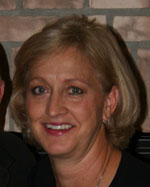 |
“Your numbers look good.”
Yesssss, the sleepless nights, anxiety attacks and all the hard work to cut costs during these slow economic times has paid off! Now we can get that computer we need.
“Unfortunately, we can’t loan you any money until you can show long-term financial stability.”
What!?? 35 years of financial stability doesn’t cut it? Having stellar credit for the past four decades doesn’t cut it? What happened to helping small business?
“The committee would reeeeeally like to see continued growth for the next 12 months and then we’d be HAPPY to extend credit to you.”
I feel like someone just punched me in the stomach. The COMMITTEE sat around and discussed us. Like we were someone off the street. Like we were someone that had no ties to this community. Like we were someone they couldn’t trust to honor their obligations. Like we were a number and not a name.
I stare down at my gnawed fingernails, my fingers nearly white from wringing my hands. So, as soon as we can prove to you that we don’t need the money, you’ll be happy to loan it to us?? Does this sound insane to anyone but me?
THAT was a defining moment for me. I smiled and said that’s OK, I understand, wondering if the banker could hear the words screaming in my brain. You can kiss my grits! We will not be beholden to the bank! We will do whatever it takes to run this business on our own. We’ll work smarter. We’ll work leaner. We’ll work harder. We’ll keep working until it doesn’t work anymore. Then we’ll do something else. But we’ll do it on our own terms.
Published in the April 19, 2011 edition of "The Dirt"
I Suddenly Remember What He Told Me!
by Kenneth M. Rasch, President of Land and Water Magazine
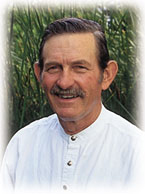 |
We walk along the cow path that would be the route. It was then noted that the slope was somewhat steep in places. This would be one of my first jobs that I could get paid for and my estimate was that it would be a days work with my RD-7 dozer at $10 per hour.
Everything starts out great. I pay a friend of mine $35 to deliver the machine to the job and get started on time. My dozer has a straight blade with no tilt and I have to get it to cut into the side hill. There appears a good size elm tree in the way that the owner wants out so I say, I’ll dig it out. (I had never dug out a tree on a slope before but how hard could it be??) To dig the tree out I have to use the corner bit to cut some roots, and that meant putting the dozer on a slope, on the slope. This worked great for maybe 5 minutes, then I hear a loud pop. I swiftly throw the clutch out and hop off to see what had happened. As I stare at the track, which is now not on the dozer, I remember…It is only NOW that I remember the guy I bought the tractor from had told me – "Don’t ever try to turn on a slope with slack in the track under the carrier rollers”.
Well, while I tried to get the track back on and the other one came off and the dozer slid into the tree. The story got real serious about then. It took 3 days of carrying tools, jacks, bars, railroad ties and a lot of drinking water and stuff down the hill (remember there was no road yet) to get this thing back on track plus another day to do the work. Needless to say, I didn’t make any money on that job but did get an education!
Published in the May 3, 2011 edition of "The Dirt"
The Wetland That Wasn't
by Michael L. Axsom
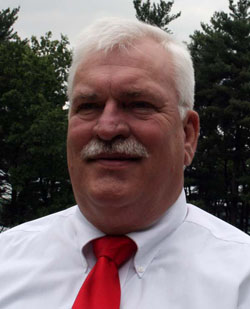 |
Then there was a leak in a sewer force main just down the road from the wetland. While working with contractors to repair the force main some things began to look unusual. The soil around the leak appeared to have been saturated with organics for quite a long time. I also noted that although equipment was on hand to remove the anticipated sewage that would be released when the pipe was cut in preparation for a repair, the equipment was not running, and the excavation was not getting full. Looking further it became obvious that past leakage from the site had eroded a channel along the outside of the pipe so that the wastewater never surfaced in that area. Where was it going? The only thing down hill was the wetland. This was one of those Excedrin moments. Could it be that the wetland was being endangered by this leak? We couldn't find any sewage surfacing anywhere.
The leak was repaired, the hole covered up and things went back to normal; except I began researching the history of the area. The force main had been built about 35 years prior. There was no record of any other leaks or repairs in the area. Looking over maps of the adjacent park and golf course revealed nothing. The wetland seemed to be the same as it had been for three decades. Going to some older Ariel photos on file with the USGS gave a different story. Before any of the park/golf course was built, and before the construction of the force main, part of the "wetland" had been farmed. The rest had once had trees, none of which were now evident.
Turns out that the leak had likely existed from day one of the operation of the force main; was never located because it never surfaced, and actually over time created and provided the hydrology for the wetland. By fixing the leak we essentially killed the wetland. Our mitigation project got somewhat more complicated after that, and the School of Hard Knocks was about to gain another graduate.
Published in the May 17, 2011 edition of "The Dirt"
Fool Me Once, Shame On You...
by Thomas Carpenter, CPESC, Landmark Earth Solutions, Inc.
 |
Published in the June 28, 2011 edition of "The Dirt"
Words of Wisdom from The School of Hard Knocks
by Bill Young, RLA, PWS
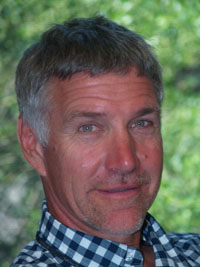 |
As part of a new ongoing column, I and others will be sharing lessons learned from the School of Hard Knocks. When you are a contractor/consultant (I will use these interchangeable), your job is to provide answers and solutions. It is assumed you have already made the early mistakes, and now your experience enables you to quickly find solutions to problems that range from easy to difficult.
So let’s start out sort of light heartedly, and explore some lessons learned in a life that has so far been interesting, sometimes challenging, sometimes sad, but mostly, and this is really important, fun. I believe that attitude is a choice, and I choose to have as much fun as legal and humanly possible. Who would argue otherwise?
To be effective as a consultant/contractor, follow/utilize the following five things:
- 1. Be Useful
- 2. Take your time
- 3. A tiger doesn't change his stripes
- 4. Pay attention, up front, to edaphic soil condistions (or pay the price)
- 5. Have fun
1. Be Useful
I once was called to a job underway on Staten Island, NY. The contractor was told (not asked) that he had to hire a wetland specialist to oversee his work. He did this and expected me to sit in a trailer and drink coffee.
Instead, I made myself useful by taking on the layout duties for all the trees and shrubs on the job. After a brief review of the plan and specs, I set out to be useful. We supervised the ordering, unloading, and storing of plant materials, and literally placed every one of 4,000 container plants in the exact location along multiple wetland zones. Minutes after placing a plant in place, a crewmember would swoop in and plant it. I could hardly rest in staying ahead of the crew. The owner noticed the increase in productivity, and In fact was able to leave the jobsite and tend to other matters. This owner would have had to use us anyway, but by us being useful, we gained his trust and respect. Also, the engineers who designed the project were grateful to have a person knowledgeable about wetlands on the job site.
The owner of the company, who prior to my arrival had done the layout himself, was able to leave the site and manage other projects. So, even though he hired me kicking and screaming, he now hires me even when a Wetland Specialist is not required, because I made myself useful. We are now on our fifth job together.
Nearly the same thing happened on a very large project in Queens, NY. On this job, the contractor was so far behind, and had established so poor confidence in the supervising staff, that he was threatened with default if he did not bring in “someone who knew something about native plants”. The contractor hired our company, and we worked long days for four weeks to seed and plant three pond sites. Again, we made ourselves useful by laying out the plants, every single one of 12,245 trees, shrubs, and herbaceous plugs. I have no idea how they would have proceeded without us. The owner of this landscape company did not know a potato chip from a couch from a native dogwood shrub. The project was done on time and on budget, and the Department of Transportation, always on a tight schedule, was very grateful. Guess whose business card is prominently displayed in their rolodex? What is the best marketing you can do? Good work. Be on time, and on (under) budget.
I have seen workers, who once they finished an assigned task, stand around waiting for the next order. Then there are workers who, after finishing an assigned task, go back to what they were doing, ask what to do next, or logically pick up a shovel or rake and make themselves useful. Which one do you think will be more successful in life? Be useful.
For the rest of Bill's hard knock wisdom, watch for the July/August issue of Land & Water Magazine. Sign up for the digital issue here, and we will send you a reminder when the digital issue is available.
If It Isn't In The Head - It Better Be In The Feet
by Jennifer Hildebrand, CPESC, CPSWQ, CESSWI, CISEC, Environmental Compliance Manager, WSB and Associates, Inc.
 |
I remember as a child rolling my eyes after my father would tell me that, “If it wasn’t in the head – it better be in the feet.” Meaning if you got to the bottom of the hill and forgot to bring whatever it was you needed from the top of the hill, you are going to head right back up to get it.
I think this was one of the most valuable lessons I learned. Trust me I learned it repeatedly as a child and then again as an adult. I still have to remember this lesson sometimes and chuckle every time it happens. The valuable school of hard knocks lesson is to make sure that you think through the implementation of a project or idea prior to thinking you have generated the single most wonderful solution ever known to man.
I often find within the stormwater compliance industry we think we are pretty smart, we come up with very technical solutions to some very complicated problems. The challenge we often encounter is that we don’t think through our solution to the person who has to implement this genius solution on the ground. When the storm is happening and the SWPPP you designed perfectly is failing, what emergency measures have you put in place? What processes have you created for that person in the field to initiate and provide solutions to ensure that environmental compliance remains a priority?
Remember, if it isn’t in the head (…or the SWPPP) it better be in the feet.
Published in the July 26, 2011 edition of "The Dirt"
Listen With Both Ears
by Jennifer Hildebrand, CPESC, CPSWQ, CESSWI, CISEC, Environmental Compliance Manager, WSB and Associates, Inc.
 |
As my career progressed I think I discovered a deeper meaning. Initially I thought this was addressing getting the next sale, or patronizing a customer, this could not be further from the truth. The saying, as it has applied in my career, has very little to do with the customer and more to do with yourself. We are quick to draw opinions in this business. We like to think we have tried everything and done everything at least once. Someone comes up with a more effective solution, and immediately we want to tell them about how that was tried once in 1967 and it didn’t work. Well, guess what? The generation behind us is smarter, more efficient, and way more technically skilled than we are. They have solutions that seem so simple we overlooked them in all of our technical wisdom.
The meaning of the plaque to me now surrounds listening to those who propose solutions without judgment or pre-disposed bias. Integrating change rather than fighting anything new, and listening with both ears while shutting the one mouth you have. Environmental compliance is not an easy task. It comes with complex problems and even more complex solutions. One thing is certain; however, the industry is not that big nor that advanced that we cannot accept new ideas, thoughts, or solutions. Without them we are most certainly going to be cast aside. So, be careful the ideas you put down today may indeed be connected to the solutions you may recommend tomorrow…
Published in the August 9, 2011 edition of "The Dirt"
Who's The Expert?
by Bob Lusk
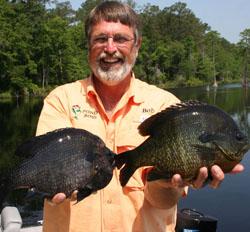 |
Struggling financially and not yet confident of my abilities, a wonderful thing happened one day. I’d really not proven much in this new, developing pond management industry. I got a call from a prominent heart surgeon near my home base. Dr. Johnston lives in Dallas and had recently bought a weekend property with a nice lake on it. My job was to evaluate the lake and advise him how to improve the fishery.
At the appointed time, electrofishing boat in tow, Dr. Johnston, dressed in overalls and a khaki shirt, and I motored into his lake, started the generator and began collecting fish to evaluate, weigh, measure, observe and release. After an hour, our thumbs were sore from holding the squiggly, wet creatures and I knew what his lake needed to grow some really nice, fun, huge largemouth bass.
Data collected, fish released, we loaded the boat and pulled up to the hill. We sidled up and sat at a picnic table nestled perfectly under a giant, sprawling pecan tree.
Dr. Johnston, with a legal pad and pen, put on his reading glasses and said, “Bob, what do I need to do for my lake?” Well, Dr. Johnston is a strapping, tall fellow. I’m pretty big myself. Rarely do I have to raise my eyes to look someone straight into theirs. Plus, he was this very well known physician.
I looked at him and said, “Well, I think your lake might, sort of, maybe over-crowded with bass. And, it looks like maybe the food chain might not be very good…” He stopped me, pulled his reading glasses forward, leaned across the table, looked me straight in the eye and said, “Bob, are you intimidated by me because I’m a physician?”
I felt my right foot pawing the ground, trying to dig a hole I could climb into. All I could muster was a meek, “Yessir.” He smiled really big, pointed his surgically accurate figure at me and asked this simple question, “Do you know what they call the guy who graduates LAST in his medical class?” I said, “No, sir.”
He said, “DOCTOR”.
“Now,” he said, “When you come into my office to talk about your heart, I’m the expert. Out here, you are the expert. So, I’ll ask you again, what do I need to do for my lake?”
He had just kindly whacked me with one of those proverbial light bulbs, which seemed to go off in my head. With confidence, I said, “Dr. Johnston, your lake is overcrowded with bass. We need to remove some. It also needs a food chain. We need to stock adult bluegills and feed them. I also think we need to fertilize your lake.”
From that day on, I had confidence to share what I know and confidence to not be intimidated by anyone, no matter the circumstance in business.
Published in the August 30, 2011 edition of "The Dirt"
Stick 'Em With Their Most Critical Issue
by Kirk Henderson, Program Manager, Integrated Roadside Vegetation Management, University of Northern Iowa
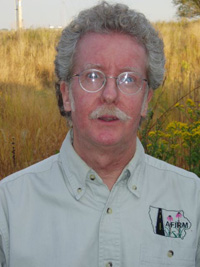 |
I want every county in Iowa to plant native vegetation in their roadsides. I have to go through each county’s board of supervisors to get there. Beautification is not the first benefit to mention when suggesting policymakers adopt the practice in their county. With them, maintenance reduction is the place to start. Pretty wildflowers makes points with the garden club, but sounds fluffy and gets the blank stare from budget-minded types.
When addressing a group of county engineers it’s not a good idea to begin by pointing out that a diverse stand of prairie grass and wildflowers improves roadside habitat and increases pheasant production by 25 percent. Even the hunters and nature lovers in the group will picture road kill and wildlife collisions and think you are disrespecting their efforts to provide safe travel routes. Concentrate on the deep roots for holding soil and protecting infrastructure.
At the Farm Bureau meeting don’t lead off with slides showing ditches rank with tall, wild looking grasses and rangy yellow blooms that all look like sunflowers. Most will perceive a lack of control and a bunch of broadleaf plants threatening their fields. First explain the concept of a strong, naturally-adapted plant community outcompeting weeds and shading out Canada thistle.
During difficult economic times these lessons become more important. We have to be tougher, tighter and less sloppy. For the public sector it’s like blizzard conditions. When they send out the winter storm warning email – stay home today, essential personnel only – show up and stick’em with their most critical issue.
Published in the October 11, 2011 edition of "The Dirt"
Putting the Try in Me
by Amy M. Dencklau, Publisher, Land and Water Magazine
 |
So my summer goes – rise before dawn, slam down a hearty breakfast of whatever is on the kitchen counter, put on my hard hat and race out the door to get to work doing manual labor for my family’s construction business.
A month into summer we have this job at our local junior college. They are adding several new buildings and we are hired to do the excavation and site work. One of our dump trucks is backed up to the foundation of the future library and the prime contractor has a bunch of his guys in the hole, setting forms, etc. That’s when my dad decides I am ready for more responsibility and so I’m told to “climb in that truck and dump the material over on the north end of the project”.
“Sure, Dad, no problem.” My car, Ralph, was an army surplus vehicle so I know how to drive with a manual transmission, 3 on the tree. 4 on the floor would be a piece of cake.
A few of the guys look up when this girl walks over to the dump truck but quickly get back to work. I position my side mirror, put it in first gear, drop the clutch and with a hearty lurch, I take off. (Did I say lurch? It is actually more like a launch!) I go a few inches. So I try it again. And again. And again. I’ve now moved (lurched) little more that a foot and with my hard hat askew, I look out my side mirror to see that all the guys in the hole are now leaning on their shovels, laughing hysterically.
OK, now I’m ticked. I mull over how I hate it when my dad throws me to the wolves just so I’ll learn something. Grumbling to myself, I gently ease up on the clutch as I accelerate and drive off, leaving a small puff of dust on the disappointed workers.
As I turn the corner, I spot my dad watching me with that “see, I knew you could do it” grin on his face.
I love that grin! And he’s right – I can do it. I can do a lot of things when I’m not afraid to fail. Overcoming that fear puts the “try” back in me, a School of Hard Knocks lesson I’ve learned repeatedly over the years.
Published in the October 25, 2011 edition of "The Dirt"
Accepting the Speed of Organizational Change
by Chris Kelsey, editor of Geosynthetica
 |
Rote education, they argue, can make it difficult to motivate change and produce innovative thinking; while the skills associated with brainstorming produce greater potential for personal and organizational economic growth, such as the ability to understand, develop and lead more complex projects and company structures.
What it has reminded me of is the tremendous impatience I felt in my first more-corporate position outside of academia. We lacked a dedicated website for my area of work. We lacked a marketing plan. Nearly everyone in my division worked in isolation.
Those conditions are not, in and of themselves, unique. Despite their ubiquity today, websites were still quite raw and underutilized in 2000 (when I started at that company). And isolation is an understandable product of an education system and organizational culture that encourages individuality. But at that time in my own professional development, my impatience clouded my understanding of the larger organization I worked in. I desired greatly to be part of something successful. I saw where we were (which is to say where my work was) and where we (I) wanted to be. A great many organizational changes were going to be needed to initiate and sustain a long-term growth strategy, but I lacked the ability to truly concentrate on the “less sexy” intermediate steps. I was so concerned with Points A and B that I did not properly perceive the scale of the path between.
My frustration was a product not only of the slowness of change presented by that organization’s structure and communication processes but the speed of my idea generation. (I wish Ms. Kamenetz and her sources had an easy solution for that!)
Today, my life and view of these things are vastly different. In the past six years I’ve run my own tiny company, gotten married, joined another corporation, and become a father (in that order). I’ve spent a couple months in Europe and a month in Asia. This week, my division’s offices are vetting project and process management applications to further improve our project efficiencies. We’re expanding both our areas of operation and our client base in each area. There’s a lot to do—but I’m embarrassed to say I still feel a few pangs of impatience. I’m following the protocol and writing the reports. I’m spending free time thinking about and mapping out the intermediate steps. (I may in fact be in danger of being too concerned with the intermediate steps this time!) But there’s still a bit of that “free radical” in me—that energy which ricochets about one’s thoughts, pushes forth a few more ideas, and spots a few more positions on the horizon to bolt towards.
I left that old company after five years. Towards the end I felt a brief period of greater satisfaction in my work after a senior manager took it upon herself to share with me some things about the larger management processes that help determine the acceptance of and timelining of new initiatives. (I would encourage everyone in a leadership position to share some of that organizational knowledge with your employees, especially if they demonstrate real interest in professional growth.) I got involved with an industry committee too, which is always a great smithy for teaching one about the need to slow down and focus on what is obtainable today and how that can best be of use tomorrow.
But the early impatience had done its damage. I decided I would never feel happy in that position and left, finally, after a year-long rebranding project. It was the right decision for me, and I’m quite sure it was for that company too. My successor brought a new perspective untainted by the long process of getting to that rebranded and re-energized place. He’s still there today and doing a great job.
I doubt I will ever enjoy large, formal processes, but the more I engage them the more I appreciate the steps between where I am and where I want to be. Truth be told, I love this new project management application—if only it had a few other functions; why, I could see it doing….
Published in the November 8, 2011 edition of "The Dirt"
Right in Your Back Yard
by John Gonzales, Professional Engineer/Branch Manager, Landmark Consulting Engineers, Inc.
One of the first lessons I learned as an engineer brand new to the business was the importance of site visits early on in the project design phase. I was working on a project for a road extension. Our surveyors performed the necessary field-run topographic surveys, supplemented the survey with property information, and gave me the worksheet off of which I was to design the sediment control measures. One of the sediment control measures designed was a sediment trap. I selected what I believed to be the perfect location for the trap, and designed the outfall and grading.
The plan was submitted and approved by the local approving agency, and the project went to construction. When the surveyors went to stake out the trap in the field, I received a phone call from them asking me to come out in the field and check to see if the location was definitely where I wanted the trap to be. The contractor was on site with the surveyors.
I was extremely embarrassed when I went to the field and saw that the location I selected was in someone’s back yard. The contractor made it a point to let me know what he thought of my design. We had to make a plan change and get the plan re-approved in a short period of time.
I could have blamed it on the surveyors, saying they did not get enough information for me to determine that the trap was designed in someone’s back yard. But, the truth is that I should have made a site visit during design to check on site conditions before designing the sediment control plan. Since then, I have made it a point to visit every site before initiating design work. My graduate studies from the School of Hard Knocks paid off.
Published in the April 17, 2012 edition of "The Dirt"
A Lesson for the Teacher
by Jim Gries, Soils/Watershed/Landscape Ecology, Hiawatha National Forest
As just one example, a few years ago, I sent two seasonals out to undertake reconnaissance on some areas of the Hiawatha National Forest to evaluate the potential for a series of riparian improvement projects. They were given location maps, field books, cameras, gps units, and other tools needed to accomplish the work. We even spent one day in the field training them. What they were not provided was enough continued oversight and guidance as the project progressed. The permanent staff, including myself, was tied up with a variety of other tasks and did not take time to check the progress daily. As a result the seasonals visited the areas and came back with limited information about the sites they visited and very generic recommendations. They did not provide the specific data needed to thoroughly evaluate, develop appropriate action plans, or prioritize locations. Unfortunately, we did not discover this until the fall when we finally had time to evaluate the data.
Although I still believe that the seasonals did their best, much of the data was not useable. The fault was mine for not providing adequate direction or oversight including more fully developing methodology and data collection forms up front. Since then, I have tried to provide additional guidance, explain methods, procedures, and background on why we are undertaking the project. Also, and perhaps most importantly, I try to spend more time in the field training and perform daily checks of the data to make sure that the data being collected and the projects being implemented correctly. This helps assure not only better output data for immediate use, but also helps the students by providing additional training in the natural resources field. A lesson learned in the school of hard knocks.
Published in the May 1, 2012 edition of "The Dirt"
Being Thorough Before Tendering the Bill
by Eric Woodhouse, CPESC, CISEC, Consultant
In many applications, under these complex rules and requirements, gone are the simple days of basic implementations of perimeter controls, concrete waste handling, and other basic or simple BMP’s. These still remain but more complex elements are being introduced to the BMP rosters on projects for purposes during and after the main construction activity.
Construction sites are more routinely including specialty subgrade storm water treatment chambers or underground infiltration systems. Though seemingly basic in concept and typical installation, there is a complexity associated with the design that needs to be considered and understood to be able to verify proper performance and capacity function after installation. Experience has taught me that what appears to be a fairly straight-forward installation can actually turn out to be very tricky.
One project involved a new residence in an exclusive, zero lot line, Santa Monica California area, just a city block off the coast of the Pacific Ocean. The original design included installation of a 48" diameter perforated pipe and crushed rock sump area. Also, installation of the lot site drainage, trench drains, catch basins, and in basin filtering systems and inserts. The pipe and rock sump needed to be installed across the nearly forty foot front of the lot under the drive and entry areas. The depth for the pipe and sump installation; pipe, rock sump, adequate soil cover, and concrete drive was a little over ten feet.
The offset from the back of curb to front of residence was less than twelve feet including a five foot easement for the city sidewalk. All of the storm water runoff was to be captured and conveyed to this infiltration pipe and rock sump after passing through catch basins and filters in the drainage system. The design was to bring the run off values to zero for the approximate 4,000 square foot lot footprint and 99% impervious area.
One of several school of hard knocks lessons learned on this job: Verifying all the conditions on the site before hand and not solely relying on the plans.
The owner called in a panic. He needed the work completed as soon as possible. The GC doing the work on the house had excluded the exterior improvements; drainage, landscaping, etc. The installation of the storm water infiltration system, required by the City and part of the agreement allowing the project to be performed, had been excluded by the General Contractor. The schedule on the rest of the house would be impacted if this work were not to be completed soon.
The owner sent a digital copy of the infiltration plan to me and requested a price same day. I asked him if a soils report was available. He responded that he did not have a digital copy of the soils report and not to worry because the conditions were sandy soil, no rock, and excavation would be easy going.
The company I was working for at the time had provided the owner of the property with previous earthworks, finish grading, landscaping, concrete, drainage, erosion control and SWPPP compliance services on two large-scale residential development projects (one a tract of over 5,000 houses). He was very familiar with our company and reputation. He approached me for help with this challenge on his residence.
I gave him a price based upon the plan. He awarded us the job and directed us to get with the General Contractor the next day to coordinate. It was fortunate that I got the notice from him to proceed at the end of the day and did not order the materials right away, as I would normally do. Not ordering the 48” pipe and other related parts at that time turned out to be a good thing.
The next morning I was on site early to review the project and meet with the GC to coordinate our work efforts and discuss access and the permitting for this portion of the job. The permit to install the infiltration system and do the excavation were included in the permit for the house. That is where the good news ended.
The GC had a major concern related to the infiltration installation. The potential for undermining of the city sidewalk, curb, gutter, and possibly the road during trench excavation was a big worry for him. The very real condition of trench wall failure and displacement and movement causing trench cave in and the potential for undermining were at the top of his list. His initial question to me was, “What type of shoring are you going to use? Routine shoring won’t even come close to cutting it with the conditions here!”
He then pulled out the soils report and began to tell me the horror stories he had faced in completing the caissons for the project. As it turned out, the soils were almost 100% "sugar" sand in type and consistency.
The residence structure included multiple 6 to 8 foot wide by 60 to 80 foot deep caissons. The GC had constantly battled the sandy conditions. The sand would flow easily into an open area each time a displacement occurred during excavation. The GC had actually excavated a majority of the caisson pits by hand because of access issues and the instability of the soils. This had required elaborate shoring, OSHA permitting, specialty lighting, forced air introduction, harnessing and hoisting of the men in the pit, and constant professional observation. The sandy soil was definitely going to be a real problem. It was blaringly apparent that excavation of the infiltration and pipe trench and shoring were going to be extremely costly.
Additionally, the City had street use, access, and activity restrictions that exacerbated the complexity of the installation and performance. We were only allowed to work on the street a maximum of four hours per day and could not leave any trucks or equipment parked on the street for any length of time. We intended to use a mini excavator and a bobtail dump truck during the work. Loading the excavation spoils directly into the truck as we dug the trench was part of the process to expedite soil handling. Lastly, all crew parking and large storage was off site, three city blocks away.
After assessing the site and reviewing the conditions I was convinced that for the project to even maybe come close to being successful, another approach and an alternate method of doing the work would be the only way to not end up taking a bath on the job.
Taking in all these conditions and challenges, I made a recommendation to change the pipe and rock sump combination to a poly cube storage and geo fabric lined infiltration system that would be dramatically lower in impact to the site and conditions. The cubes were 96% open and had load-bearing capabilities under specific design and installation criteria. This would require a maximum excavation of six feet and less width to the trench instead of the original ten foot depth associated with the pipe and rock sump to accomplish the same water storage volume capacity.
A design and calculations were provided to the engineer and city for review and approval. The result for everyone and everything but my pocketbook was a huge success. The impact on the site was dramatically reduced. The depth of excavation did not exceed six feet. The efficiency of performance of the new cube system reduced the overall footprint and cost impacts on the project. This removed great concerns and worries and provided a marked improvement in efficiency and performance. We were “heroes” in the owners’ opinion. Our reputation for solving problems and understanding new technologies was improved. The City now routinely recommends the cube system as an acceptable alternate for infiltration systems.
I was extremely fortunate on this job. I have had other experiences that did not go so well. If I had not had previous experience, knowledge, and credentials that allowed me to suggest the material change and provide this type of design and install, this job could have been a disaster. These types of systems are being used more and more frequently across the country. Having an understanding of the new technologies and systems being introduced will be needed in the future to compete and stay ahead in the game.
With the costs of the design and approvals and the material changes, we did not do as well on the project as I had hoped. It could have been far worse! We proceeded with the project under the new design and holding to our original bid amount in trying to keep this important client happy. In comparison to the potential costs related to shoring and installation of the original design the job was a success. We were able maintain a solid relationship with a good customer. Having to try and work out an adjustment to the price with the owner after already tendering a bid and the possible ramifications for a future long-term relationship and work could have been impacted. Our reputation with the owner and the City were greatly increased. The less than great financial return along with all the effort expended in achieving the solution and results were a lesson learned and an acceptable tuition fee in the school of hard knocks.
Published in the July 26, 2012 edition of "The Dirt"
Alfred – A Good Man of Few Words
by Kenneth Rasch, President of Land & Water Magazine
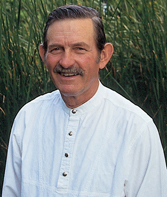 |
The material was kind of wet and sticky stuff, which makes it hard to dump and spread in big gobs with the scraper lifted as high as it would go. To get the last of the stuff to let loose of the ejector gate, it seemed like pulling harder on the cable control unit lever would help. Then there was a loud noise when the cable broke, causing quite a commotion. The apron fell hard against the cutting edge, lots of small pieces of cable and grease flew through the air and I knew instantly, I was in big trouble.
It was a long, hot walk back up the hill to where my pickup was parked. I dreaded calling Alfred (our head mechanic, welder, fixer of everything) on my primitive radio and what he would say. (I won’t print what his first words were!)
“What the hell is wrong with you, can’t you remember anything I told you? I specifically said NOT to double block the scraper or you will break the cable. Now it’s up to you to fix the thing, IF there’s enough cable left on the roll.”
So getting the raveled cable out was somewhat easy because of all the grease (he said to make sure that you grease all the sheaves good). I tried to remain calm and remember just how to rethread the cable back through the sheaves and when just about done, I remember the last part of what he said.
“If there’s enough cable on the roll.”
Of course, there is not enough cable left, so I start over by going to the shop for a new roll of cable. Some people may not have a lot of words, but the words they do speak are important (except for the bad ones!)
Published in the August 7, 2012 edition of "The Dirt"
School of Hard Knocks: You Can’t Control Mother Nature
by John Phelps, Certified Stormwater Inspector, Environmental Scientist SOLitude Lake Management
It took over a year of planning. There was engineer design work needed to update the facility components, state and local permits and approvals were needed for the activities to take place, and it took my client some time to realize that he could not delay the work any longer--that it would only get worse and more expensive over time.
Finally, after many meetings, multiple contract revisions, and a pre-construction meeting the remediation work was going to take place. The weather was cooperating. The summer of 2011 was dry and conditions at the basin were ideal for the needed excavation, repairs and grading. The work took four days and went off without a hitch (see attached picture of just completed work near inlet).
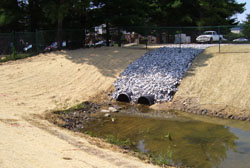 |
The work was completed on a Friday. The weekend started off nice, but quickly the sky opened up and the region received a drought busting rain. It rained and rained and rained and all weekend I was concerned about the retention basin. The steep slopes had just been seeded. What would it look like on Monday I wondered?
Sure enough, first thing Monday morning I got a call from a colleague who had come from the site. The news was not good. The rains and sheet flow had eroded an area near the newly replaced inlet pipes. A ten foot deep by ten foot wide gully had opened up and all that soil was now down in the basin (see picture). !?X@!
I called my client to give him the unfortunate news, but assured him once it stopped raining we would get back out there with the equipment and fix the new problem. It rained for another two weeks and the gully kept getting larger, but the conservation district and client understood there was nothing we could do but wait. Fortunately in the budget I had accounted for touch up work. While the additional work was more than a touch up, it had to be done to provide my client with the end product he paid for. It only took an afternoon to excavate the soil in the basin, grade the embankments, and stabilize the area. Mother nature gave us a break and the grass was able to grow.
The site now looks great, is functioning properly and my client is happy. I learned a valuable lesson from that job: you can’t control mother nature, but you can account for possible curve balls she might throw you.

